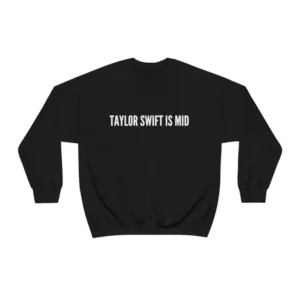
In today’s music landscape, merchandise isn’t just an afterthought—it’s a key part of the narrative. For artists like Taylor Swift, merch has become a canvas to extend the story told through music. From the font on a hoodie to the colors on a vinyl record, every element is curated to reinforce the emotional journey of an album. This evolution marks a significant shift: merchandise has transformed from simple fan memorabilia to a vital storytelling tool and cultural artifact.
Merch as a Mirror of the Era
Every album is its own world. In the past, artists released T-shirts and posters as promotional materials. Today, especially in the streaming age where physical music sales are declining, merchandise is one of the few tangible ways fans can connect to a musical era. This is where storytelling comes into play.
Taylor Swift is the gold standard in this space. Each of her albums represents not just a new sound, but a distinct aesthetic, mood, and narrative. Her merch reflects that, often functioning as a wearable extension of the album’s themes. Fans don’t just hear the music—they wear it, collect it, and live in its world.
The Evolution of Taylor Swift's Merch
From her 2006 country debut to her 2020s indie-folk experiments and pop anthems, Swift’s merch catalog tells a clear story of artistic evolution. Here's how she’s used merchandise to reinforce each of her musical eras:
Debut & Fearless (2006–2009): Early merch mirrored the innocence of teenage country stardom. T-shirts with sparkly fonts, pink cowboy hats, and diary-like notebooks reflected the themes of young love and dreaming big.
Speak Now (2010): With its fairytale motifs and more self-written lyrics, merch became more whimsical. There were princess silhouettes, purple tones, and romantic typography, matching the self-empowered storytelling of the album.
Red (2012): A transition era—emotionally and stylistically. Merchandise incorporated deeper reds, heartbreak motifs, scarves (a nod to fan-favorite lyrics), and a mix of vintage and modern aesthetics.
1989 (2014): Swift’s full dive into pop was reflected in minimalistic, city-themed merch. Polaroids became iconic, and items like black sunglasses and pastel tees channeled the retro-pop vibe of the album.
Reputation (2017): A complete rebrand. Gone were the pastels—Reputation’s merch was edgy, dark, and unapologetic. Gothic fonts, snake imagery, and black-on-black designs mirrored the album’s themes of rebirth, vengeance, and media commentary.
Lover (2019): The pendulum swung again, this time to soft, pastel-colored items—heart-shaped glasses, butterfly prints, and cotton candy tie-dye. It was romantic, hopeful, and healing—an emotional contrast to its predecessor.
Folklore & Evermore (2020): Released during the pandemic, these albums offered cozy introspection. The merch followed suit: earth tones, cardigans, flannel shirts, and handwritten lyric books. It was peak cottagecore—calm, rustic, and personal.
Midnights (2022): A moody, synth-infused record with themes of late-night reflection. The merch leaned into celestial motifs—stars, moons, navy hues, and sparkly accents—conjuring a vintage-glam aesthetic.
Each merch drop was a calculated extension of the era, not just an accessory to it. Fans knew they were buying into a feeling, a moment in time, a piece of a shared journey.
Visual Language: Fonts, Colors, Symbols
The storytelling power of merch often comes down to the smallest details. Fonts, for instance, are carefully chosen to reflect an era’s personality—whimsical cursive for Speak Now, bold gothic serif for Reputation, or handwritten script for Folklore. These typographic choices say as much as the lyrics.
Colors play an equally important role. Every Swift album has an unofficial “era color” that permeates its visuals and merch. Fans refer to Red’s crimson aesthetic, Lover’s pastels, or Midnights’ deep blues as shorthand for entire emotional landscapes.
Then there are the symbols—snakes for Reputation, butterflies for Lover, stars and clocks for Midnights. These aren’t just graphics; they’re icons embedded with meaning. Fans decode them like visual lyrics, building deeper emotional connections in the process.
Merchandise as World-Building
For Taylor Swift and other visionary artists, merch is world-building. Just as filmmakers create immersive cinematic universes, musicians are creating cohesive, lived-in album worlds. The key difference? Fans can literally wear them.
This world-building is especially effective for artists who evolve visually and emotionally over time. For Swifties, each merch drop is like receiving new artifacts from a beloved saga. The items become keepsakes, memory markers, and even badges of identity.
Tour merch, in particular, functions almost like a passport stamp—proof you were there, part of something bigger than yourself. The Eras Tour made this especially clear. Each city had slightly different merch options, limited-edition designs, and pop-up stores, turning the hunt for merchandise into an interactive fan experience.
Emotional Connection and Ownership
Why does this strategy work so well? Because fans don’t just buy merch—they feel it. Owning a cardigan from Folklore is like owning a piece of that quiet, reflective chapter. Wearing a Reputation hoodie is a statement of reclaiming power. Fans invest in merch not for the item itself, but for the emotional narrative it represents.
This emotional branding builds fierce loyalty. It creates a sense of ownership. Swift’s fans don’t feel like customers—they feel like co-authors in the story. By tapping into themes of identity, nostalgia, and personal growth, her merch becomes more than a revenue stream—it becomes a symbol of shared meaning.
Influence on the Industry
Taylor Swift may lead the pack, but she’s not alone. Other artists are increasingly adopting this era-based storytelling through merch:
Beyoncé’s Renaissance album inspired high-fashion, ballroom-inspired designs in merch drops and tour visuals.
Harry Styles leaned into a colorful, gender-fluid aesthetic for his Harry’s House line, aligning with his themes of comfort and vulnerability.
Olivia Rodrigo used gritty, punk-meets-pop visuals for her Guts merch to capture youthful angst.
Artists are learning that fans don’t just want a logo on a shirt—they want meaning. The days of generic band tees are fading. Fans crave storytelling, continuity, and connection.
The Business Behind the Story
Of course, storytelling isn’t just about emotions—it’s big business. Artist-branded merchandise has become a billion-dollar industry, with many artists earning more from merch and touring than from music sales. Swift’s Eras Tour merch lines sold out in hours across cities, and online demand crashed sites multiple times.
But it's not just quantity—it’s quality. Higher-end merch, sustainable fashion options, and artist-curated drops are raising the bar. Fans are willing to pay more if the story—and the craftsmanship—resonates.
The Future of Merch Storytelling
As digital experiences grow, we may soon see storytelling expand into virtual merch, augmented reality try-ons, and NFT-style collectibles. But the core idea remains the same: merch as memory, as message, as mirror.
The future of artist branding is immersive, emotional, and deeply human. Whether through fabric, typography, or tone, storytelling through merch isn’t just a trend—it’s the new standard.
Conclusion
In the modern music industry, the merch table is no longer just a place to grab a T-shirt—it’s where the artist’s story comes to life. For Taylor Swift, each era is a narrative universe, and the merch is the wardrobe, the props, and the script. It’s how fans step into the story and make it their own.
The next time you see a fan wearing a snake-print hoodie or a glittery pink sweatshirt, know that it’s more than merch—it’s a chapter from the book of fandom, authored in part by them.








taylorswiftmerchshirt 27 di
https://houstonstevenson.com/2025/04/08/from-t-shirts-to-collectibles-the-fascinating-universe-of-taylor-swift-merch/
https://www.ontheballpersonnel.com.au/2025/04/09/the-empire-of-eras-how-taylor-swifts-merchandise-became-a-cultural-and-commercial-powerhouse/
https://redebuck.com.br/read-blog/33499_the-empire-of-eras-how-taylor-swift-039-s-merchandise-became-a-cultural-and-comm.html
https://firstamendment.tv/read-blog/120358
https://ematejo.com/2025/04/09/the-eras-of-merch-branding-as-storytelling-in-the-music-industry/
https://palkwall.com/read-blog/34082_the-eras-of-merch-branding-as-storytelling-in-the-music-industry.html